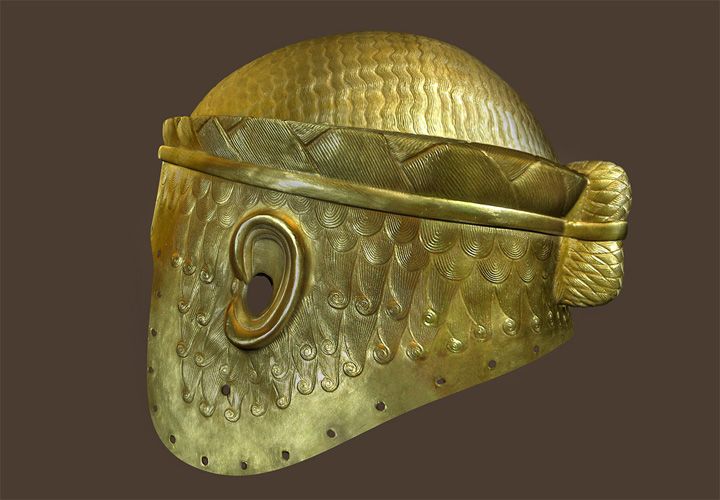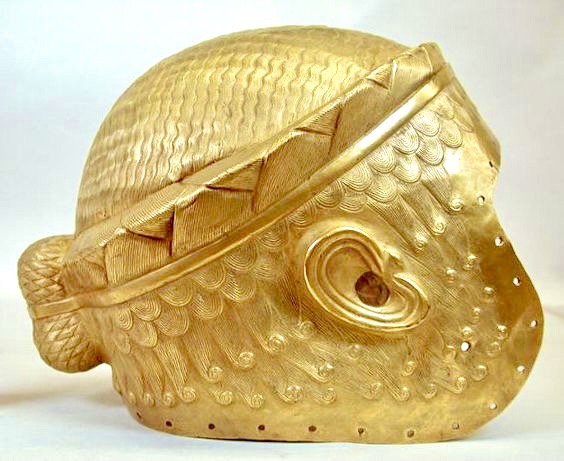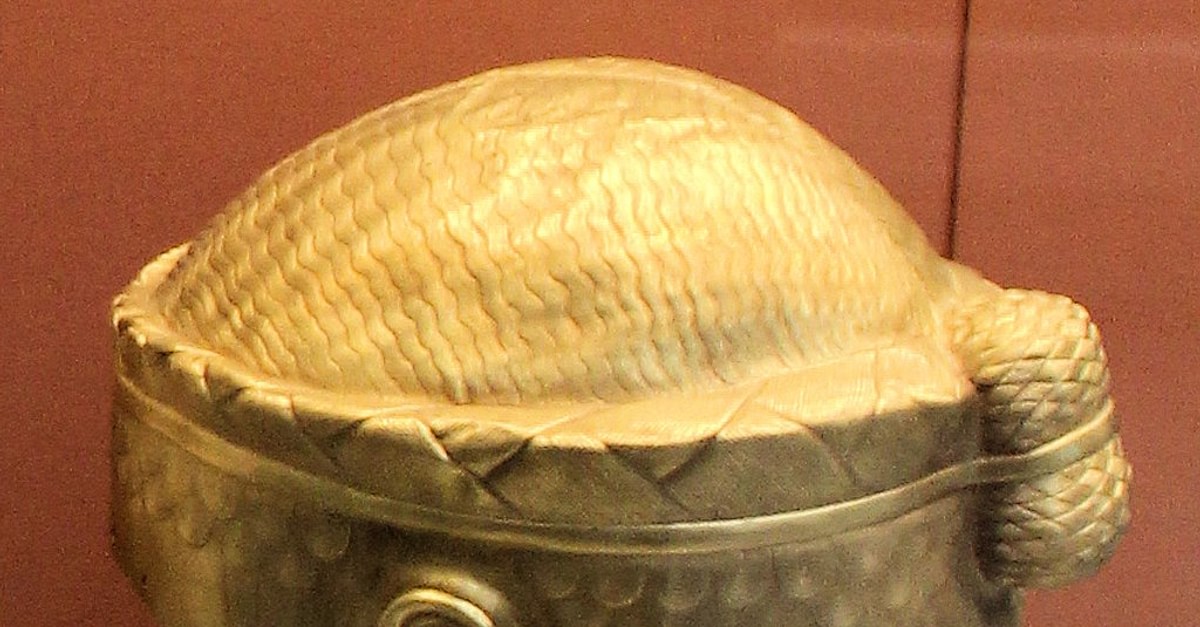Introduction
The golden helmet attributed to King Meskalamdug is a remarkable artifact from ancient Sumer, dating back over 4,500 years to the First Dynasty of Ur. Discovered in 1924 during excavations in the Royal Cemetery of Ur, this ceremonial headpiece reflects the artistry, craftsmanship, and cultural sophistication of one of humanity’s earliest civilizations.

Discovery and Historical Significance
The helmet was unearthed by Sir Leonard Woolley in the burial site of Ur, located in modern-day southern Iraq. Dating to approximately 2600–2400 BCE, it is associated with King Meskalamdug, a significant figure whose name translates to “hero of the good land.” This discovery shed light on Sumerian burial practices, which emphasized the wealth and divine status of their rulers.

Craftsmanship and Design
A Ceremonial Masterpiece
The helmet was crafted from a single sheet of gold, meticulously hammered to resemble human hair and ears. The fine detailing suggests it was intended for ceremonial use, symbolizing the king’s divine authority rather than practical protection in battle.
Advanced Techniques
Small perforations along its edges imply it may have been lined with leather or adorned with additional decorative elements. This attention to both design and functionality showcases the advanced metallurgical skills of Sumerian artisans.

Preservation and Legacy
The original artifact is housed in the Iraq Museum in Baghdad, while a detailed electrotype reproduction is displayed at the British Museum in London. This dual preservation ensures the helmet’s legacy endures as a symbol of the Sumerians’ artistic and technological achievements.

Conclusion
The golden helmet of King Meskalamdug stands as a testament to the ingenuity and cultural sophistication of the Sumerians. It not only highlights their mastery of metallurgy but also offers a glimpse into the rituals and symbolism of early Mesopotamian kingship. Today, it remains an enduring symbol of one of the world’s most influential ancient civilizations.
Video

